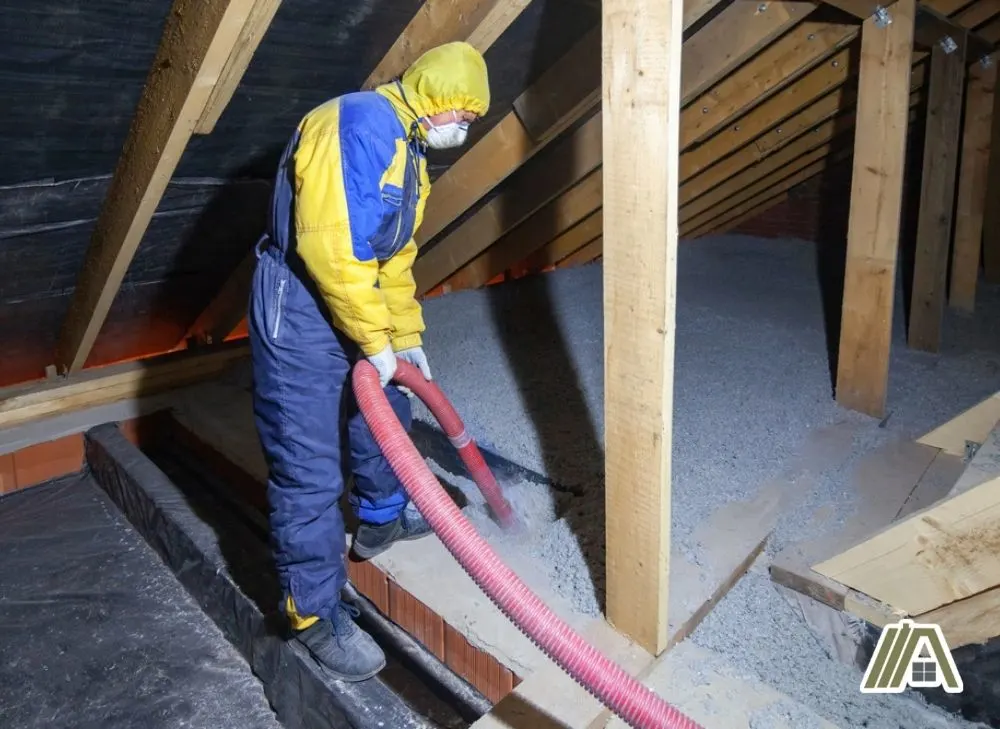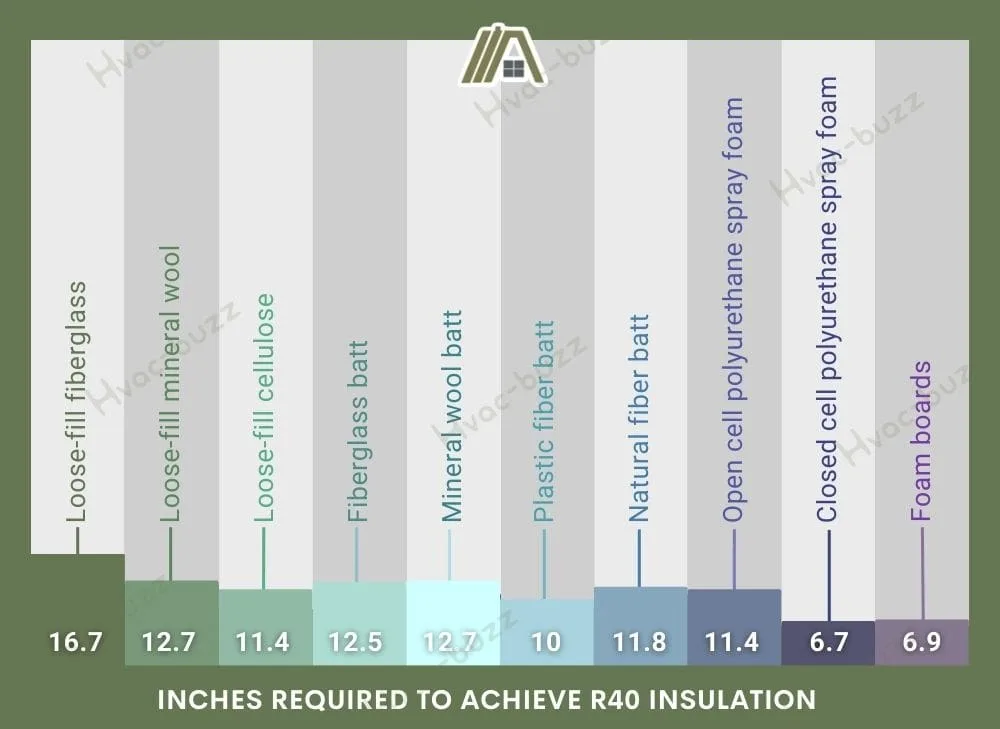Insulation can be a tricky thing to work with, especially when trying to understand different thicknesses. R40 insulation is not the most common insulation out there, but it is worth knowing about the different types that can be used for this rating.
This article will provide you with various details regarding R40 insulation. Most importantly, an easy-to-read and informative table can be found that shows the thickness of each type of insulation needed to reach R40, and the best-selling option for different types of insulation.

R38 is more commonly specified. R40 can be used instead, but the increase in thermal resistance is too insignificant to warrant the extra cost. The thinnest layer achieving R40 is with closed cell spray foam polyurethane (6.7"). The thickest layer achieving R40 is with loose-fill fiberglass (16.7").
R40 in Not a Common Rating/Requirement
It is more common for R38 or R49 to be used. R40 is not a typically used in the world of insulation R-values.
When compared to R38, an R40 rating doesn’t offer a significant enough difference to justify it being used instead of R38. Using R40 instead of R38 would cost slightly more with little to no increased benefit.

When compared to R49, the benefits that are provided are more significant than those offered by R40. R49 is like the “next step up” on the rankings for when a significant difference becomes noticeable after R38.
Furthermore, if R49 is required, the R40 is not sufficient to make the house code-compliant or sufficiently insulated.
Insulation Abilities of R40
R-values are a measure of how effectively insulation prevents heat transfer through conduction. Conduction is the heat transfer via solid materials.
An R-value of 40 stops about 97% of the heat transfer that would occur via conduction.
Where Can R40 Insulation Be Used?
R40 insulation can be used wherever R38 insulation is required. In such cases, R40 will be a little excessive, but not by much. That additional amount of insulation may provide some extra benefits as well.
Although there may not be a notable increase in the amount of heat that can pass through, the extra thickness can make the room more soundproof.
The extra thickness could also (depending on the insulation used) help increase the strength of the structure the insulation is used on as well as increase the resistance to fire.
Where R40 insulation can be used also depends on the climate that the home is in. Table N1102.1.3 of the International Residential Code (IRC) explicitly outlines this.
R38 insulation (and so R40 could be used) is only ever required in the floor of homes in zones 7 and 8. Some states that lie in zones 7 and 8 are northern parts of Wisconsin, northern parts of Minnesota, and Alaska.

R40 Insulation Thickness Guide: Table
These climates need better insulation because they are more likely to experience colder and more frigid temperatures.
| Insulation Type | Inherent R-value (per inch thickness) | Thickness to achieve R40 | Best-selling option |
| Loose-fill fiberglass | 2.2-2.7 | ± 16.7″ | Owens corning 19 |
| Loose-fill mineral wool | 3-3.3 | ± 12.7″ | R15 comfortbatt |
| Loose-fill cellulose | 3.2-3.8 | ± 11.4″ | Borate only cellulose |
| Fiberglass batt (amazon link) | 3.1-3.4 | ± 12.5″ | Knauf insulation EcoBatt |
| Mineral wool batt | 3-3.3 | ± 12.7″ | Havelock Wool |
| Plastic fiber batt | 3.8-4.3 | ± 10″ | JM Comfort Therm Fiberglass |
| Natural fiber batt | 3.4 | ± 11.8″ | Owens Corning |
| Open cell polyurethane spray foam | 3.5 | ± 11.4″ | Loctite tite foam |
| Closed cell polyurethane spray foam (amazon link) | 5-7 | ± 6.7″ | Tiger foam |
| Foam boards | 3.6-8 | ± 6.9″ | SilveRboard |

Sources
https://www.tfofl.com/how-insulation-works
